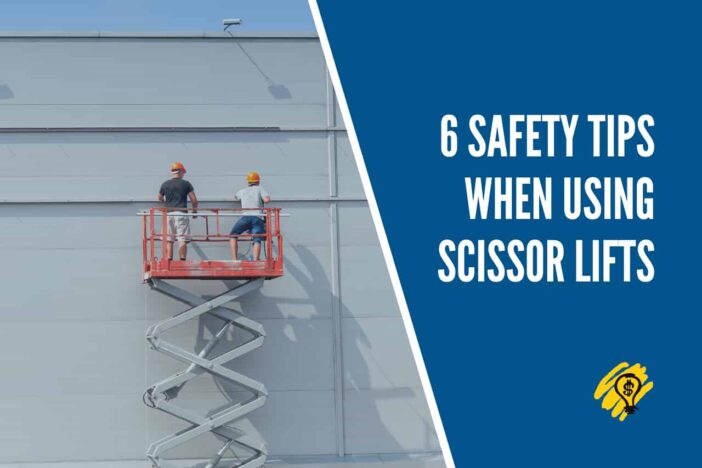Most maintenance activities, warehouse inventory work, or construction projects involve operations done off-ground. While a simple ladder should help you do the job, you’ll need a specialized and sturdy platform to efficiently complete tasks. This is where scissor lifts prove useful.
A scissor lift is a vertically rising platform often found in facility maintenance and construction applications intended to elevate workers and necessary tools to working heights. These scissor lifts can easily handle any application that normally requires a tower, ladder, or scaffolding. Although scissor lifts are one of the fastest and safest ways to work on things at height, there are still potential risks and hazards associated with using them.
Here are six safety tips when using scissor lifts:
1. Train Workers
Although no formal certification is required to operate a scissor lift, regulatory standards require employers to provide their workers with the necessary training before operating any type of machinery. Therefore, prioritize having regular opportunities to refresh the basic training on correctly using a scissor lift and its safety precautions to ensure that your entire crew stays safe during operations.
2. Secure The Area
How and where you position your scissor lift for work makes a critical aspect of preventing any incidents or accidents. So, before operating a scissor lift, always assess the worksite beforehand, identify possible hazards, and ensure that the surroundings are secure.
If you’re working on a project that involves or is located near a power source, maintain a careful distance to prevent electrocution. Avoid direct contact with power lines. But always remember that electricity can arc from power lines to a worker or equipment even without direct contact.
To prevent crashing incidents, always be cautious every time you move the scissor lift and ensure that the surrounding area is clear. Stay aware of stationary objects and moving vehicles that might be in your path. If the worksite is crowded, always ask a co-worker to handle traffic control and prevent collisions.
3. Ensure The Machine’s Stability
One of the biggest risks and most common causes of scissor lift accidents is poor operation stability. If the machine isn’t properly secured, it can cause the machine to tip over and cause damage to both worker and equipment.
Always work on solid and level surfaces. If you’re working on rough terrain, you need to ensure that the scissor lift you have is suitable for such an environment. Lower the platform before moving the lift to another area. In addition, keep an eye out for the weather. Never operate a lift on a windy or rainy day.
4. Stay Inside The Guard Rails
Guard rails help protect workers from falling off the platform. Workers should stay inside the guard rails, particularly if the platform is elevated at a certain height. They should never try to stand on the guardrails, no matter how good they are at balancing.
Furthermore, to avoid having workers leaning over the edge of the rails, the platform should be positioned as close as possible to the site. Aside from these, workers should always wear a harness or other fall protection devices to ensure safety. Workers should never climb up an elevated scissor to access the platform. It’s also necessary that the guardrails are regularly maintained to ensure that they don’t loosen or rust.
5. Avoid Overloading
One of the most common mistakes you can make when using a scissor lift is overloading the platform. Depending on the brand and model, a scissor lift has a recommended weight capacity that must be strictly adhered to prevent any accident.
As the platform goes higher, it also becomes unstable. If the weight undermines the base, the worker aboard the platform will be at a higher risk of falling due to outside forces. Therefore, ensure that the platform adheres to the maximum weight limit and is not overloaded.
6. Conduct Regular Inspections And Maintenance
Regardless of how cautious you are when operating a scissor lift, it’s useless if the scissor lift itself is not regularly maintained or safe to use. So, make sure that you follow the recommended upkeep schedule from the manufacturer. Always test and inspect the machine’s controls and moving parts before every use. Also, pay special attention to the emergency stop function to prevent unexpected failure during use.
Take Away
Incidents and accidents may happen, especially in a busy workplace. But it doesn’t mean that it’s inevitable. By brushing up on some basic rules and safety tips when using a scissor lift or any heavy machinery in your workplace, you and your crew can stay safe and reduce the risk of any incidents or accidents happening. Therefore, ensure to implement and encourage workers to follow such simple, yet extremely important safety guidelines mentioned above.



